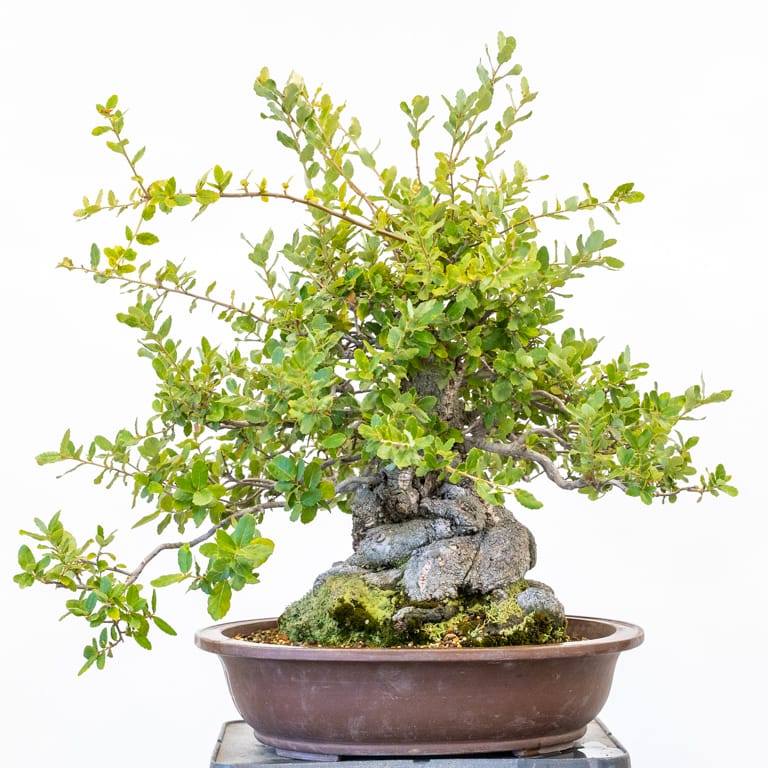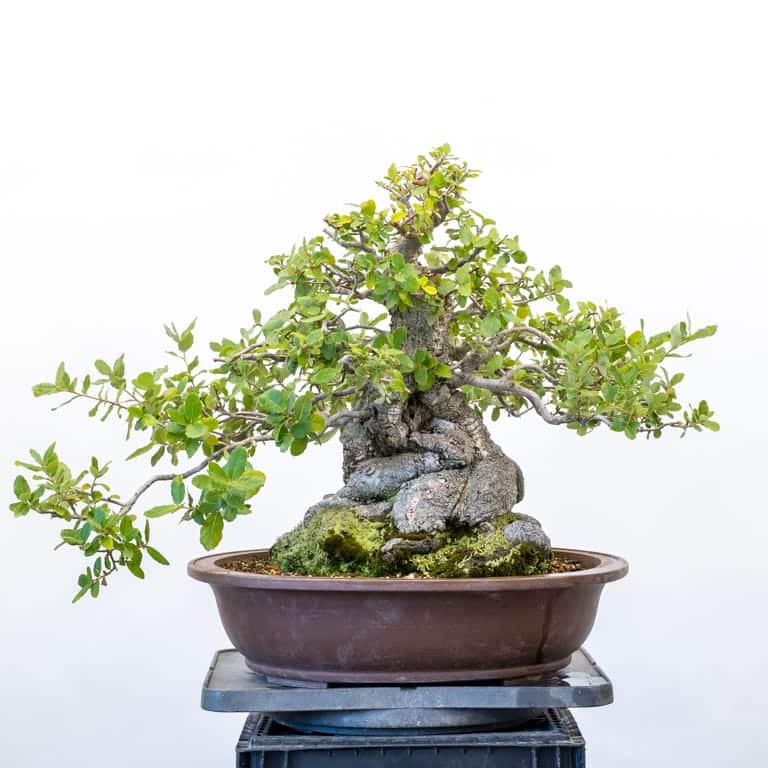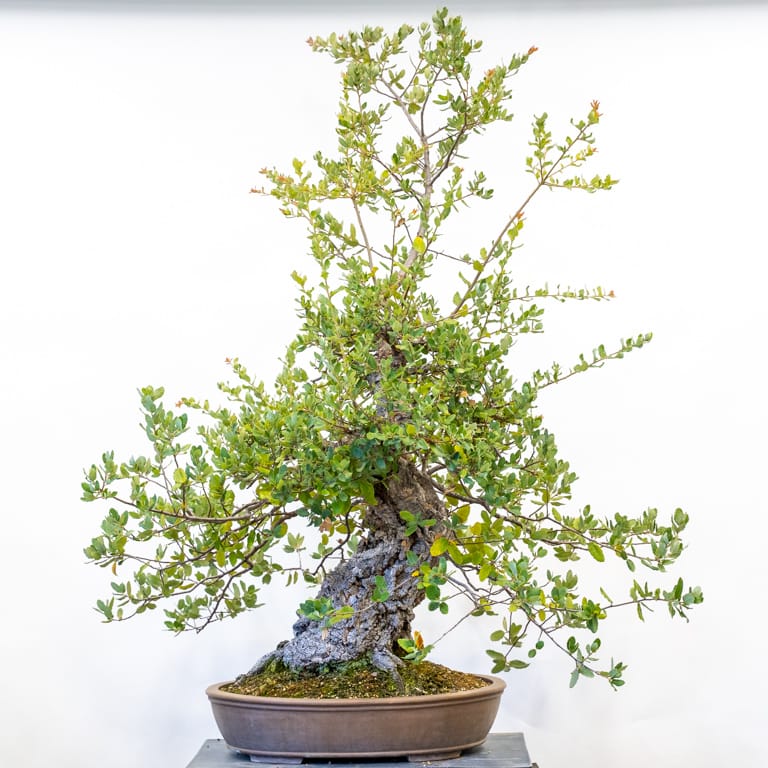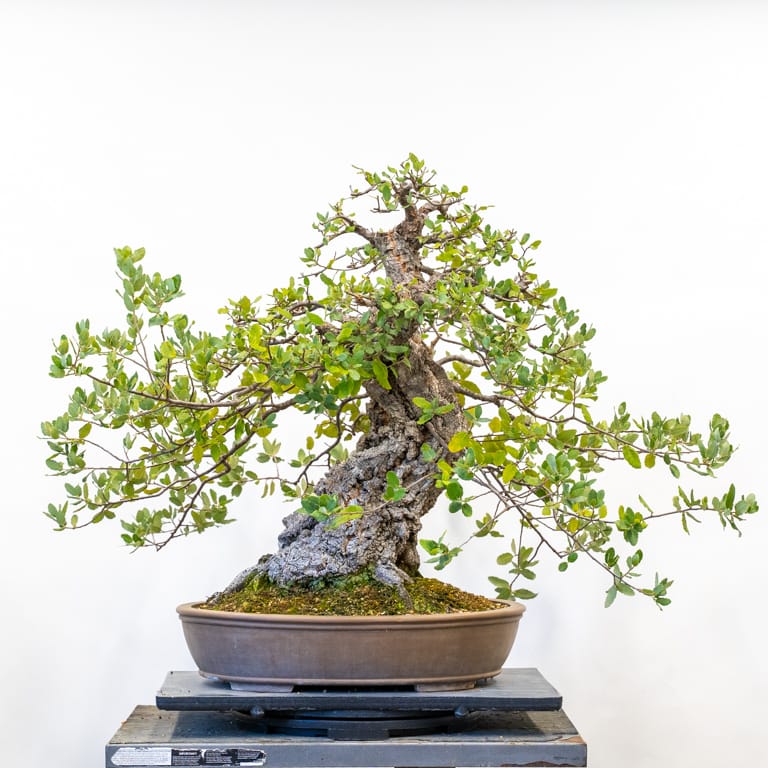After growing a trunk to the desired size, the next step is creating primary branches. And the bigger the trunk, the bigger we can expect these branches to be.
The main challenge is that most trees want to invest resources in the upper branches as they receive the most light. If we let upper branches grow freely, we reduce the odds that the lower branches will thicken at an appropriate pace – if at all.
Getting better growth on the lower branches requires frequent pruning of the upper branches. I’ve neglected this step on my cork oaks this year as I only brought them in for their first pruning this past week. The upper branches had grown strong and the lower branches were weak. The solution is to prune the upper branches and leave the lower ones alone.

Cork oak with strong shoots on the upper half of the tree

After pruning all but the lowest branches – 16″
The plan for the rest of the growing season is to maintain the silhouette on the upper branches while letting the lower branches run until they reach the desired thickness.
The imbalance was worse on one of my larger cork oaks. I’d let a sacrifice branch grow freely for a couple of years to thicken part of the apex, but I could have reduced it a while ago and kept the remaining apical growth in check.
This hasn’t caused problems for the tree but it did slow down progress.

Cork oak before pruning

After pruning the upper branches – 27″
When the lower branches reach the desired thickness I’ll shorten them and repeat the process to create taper. Once this basic structure is in place, I can focus on branch development on all of the branches to create the silhouette I have in mind for the tree.
Subscribe to Bonsai Tonight
New Posts Delivered Every Tuesday and Friday
Mert Çiftdemir says
Dear Jonas,
Thank you for this very helpful post for me. I want to ask something. I have 2 cork oaks, one of them is a tall and slender one with no lower branching. I’ve never seen a literati cork oak, maybe a shohin sized one after hard pruning will be better? I’m wondering your choice.
Thanks,
Mert
Jonas Dupuich says
Hi Mert! I haven’t seen many (any?) of either so I’d decide like this. Which do you think would be the more compelling tree? Will the shohin be good or great, and will the bunjin be merely good or will it be great? In lieu of making the best tree possible, I’d go with whatever sounds like the most fun. A shohin cork oak sounds tricky but fun!
Gis Collard says
Thanks Jonas, nice post. What are your plans for the top left branch just below the crown. Would you risk cutting it back and leaving a scar? How do you go about judging the risk v reward of a scar?
PS thanks for the BSOP link to the critique. I enjoyed it a lot, you have a dry sense humour!
Jonas Dupuich says
Hi Gis, good question! The plan is to keep it. I’ll need a number of branches pointing upwards to form the crown of the tree and for now I don’t have other branches in the area.
As for scars on cork oaks, it’s something I don’t worry about as very large wounds can heal surprisingly fast on the species. Thanks for the question!
Sebastian Fraye says
Thanks for the great post and other articles on oaks, very informative and helpful! I have quiet of few different varieties of oaks including cork oak and wondered how often will you cut back the upper branches during the growing season, and have you noticed a difference with more frequent pruning on oaks? And also how often will you change/remove the wires? I have found that I will get wire bite after less than a month on some with more vigorous growth.
Jonas Dupuich says
Thanks, Sebastian! I’ve found the same thing with wire on oaks. On vigorous branches the wire cuts in quickly while the slender branches don’t change much over time.
When I have the time, I can cut back or pinch new growth at the apex about once a month.